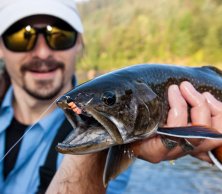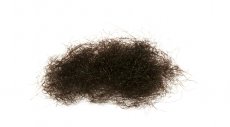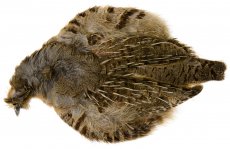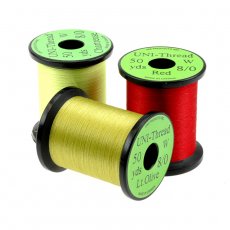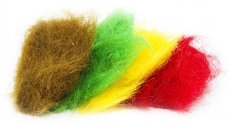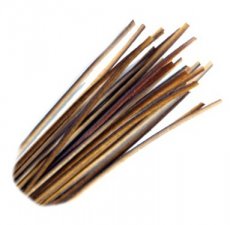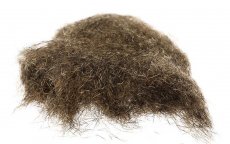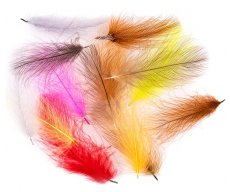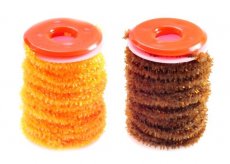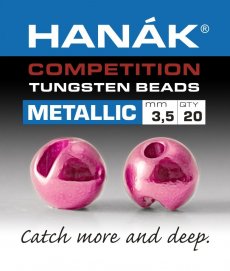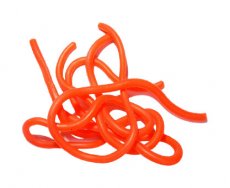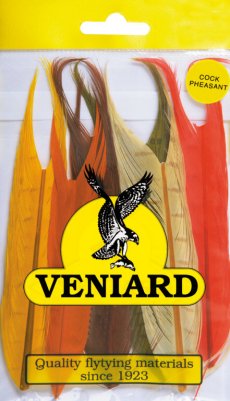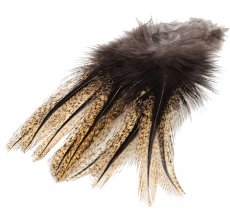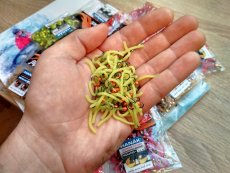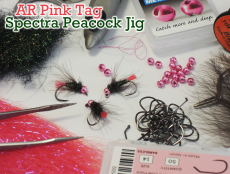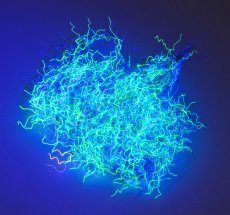I approached our CzechNymph ambassadors, which include both fly fishing competitors and normal "leisure" fly fishermen with different approaches to our common hobby, to see if they would share their TOP tying materials. Of course, they all very willingly complied and sent me all the necessary information about the most popular materials that they most often work with at the vice. Don't miss this original listing complete with killing fly patterns!
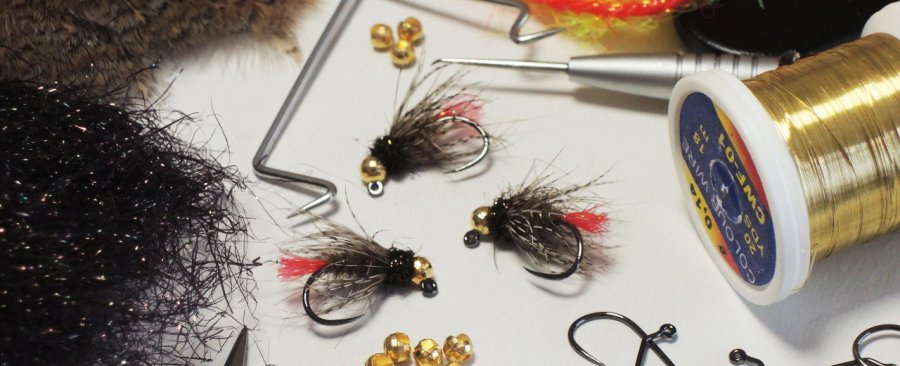
🎣 VOJTA UNGR - Spectra Dubbing Hends
When I started fly fishing, my goal was to tie the most intricate and the most elaborate fly patterns. I thought those were the only ones he was really into. But over time I found that sometimes the simplest, most basic fly patterns work just as well and maybe even better. That's also why I've been trying to simplify my flies more and more for the last few years, so that I can spend as much time as possible on the water and not at the vise. And I think I'm succeeding. I am much more focused now on having these simple but functional flies in all possible sizes and in the case of nymphs in all possible weight classes.
And with that comes the choice of the right materials. I used to have almost everything a fly tier could think of at home and spent a lot of money on these fly tying materials. I often completely forgot what kind of materials I have at home and only discovered them while cleaning the fly tying table. Fortunately, today I can get by with a few basic materials. And when I think about the material I use the most, it is undoubtedly Spectra Dubbing from the Czech company Hends in colors number 45 and 46. It is an artificial dubbing in the color of natural and copper-colored peacock. These dubbings have shades of black, green, blue, brown and sometimes purple. It depends on the lighting conditions. Well, for me, these colors are simply flawless and fish are simply attracted to them like a magnet. Although these dubbings and their colors are artificial, they perfectly imitate the natural colors found in some insects. Especially with the terrestrial one. Just type "blue-green bug" into google like I did 😊.
Of course, a lot of these bugs and flies move around water. And that both in the air and on the trees or on the grass on the shore. And, of course, they fall into the water through their inattention. Where they move all their feet first and try to get back to shore. This simulates a well wet fly for chub fly fishing, which reacts almost immediately after it hits the water. Some bugs and flies don't move that fast, but rather float on the surface and get carried away by the current.
We also have such dry flies in the box. And if they have been swimming in the water for some time, they sink and float in the water column. And that, in my opinion, is exactly what the notorious fly - Red Tag, or Orange Tag, which has been used even more lately, imitates. Therefore, these dubbings are most often suitable for the entire bodies of flies and their thorax, on which they beautifully imitate the legs of insects.
It simply follows that these dubbings can be used for dry flies, wet flies and all possible nymphs. I also often use them on stillwater nymphs, lures or booby nymphs. In short, you can find this dubbing on almost every other fly of mine. So try, experiment and catch fish!
🎣 TONDA PLESKÁČ - English Partridge
I would like to introduce you to one of my all time favorite fly tying materials. It is a partridge and its feathers. I often use it when making wet flies, but it can also be used to make nymphs.
What I like about the partridge is that its entire scalp can be used. From the size of the feathers, which you measure exactly to match the size of the fly, as well as the color, because the color changes beautifully from white-black to mottled brown. So one partridge fly may be darker and another time light. Dust feathers can also be used to make the tail of small streamers, which are great for so-called sculpins, which you will definitely not offend the streamer with.
However, my most frequent use is for March Brown and their variants. I make the body from a natural hare, which can be ribbed with some tinsel, but it can also be without. I wrap the partridge's feather around the head, where it then works by tearing in the water and provokes the fish to activity. All kinds of fish can be caught on partridge flies.
Unfortunately, it is not an infinite material, and sometimes you run out of feathers of the size you are tying the most. And precisely because of this, you can also try other variants from other feathers that have a different size and color.
I hope that it was useful for you and that you will tie as many effective river and stillwater flies as possible with this material.
🎣 MICHAL RYPL - Genuine Seals Fur Dubbing
I would like to share with you one of my TOP fly tying materials. I try to use as many natural materials as possible to tie my flies. One of them is seal fur. I have learned from practice that branded goods are a guarantee of quality, so I trust the Veniard brand most of all. Of course, if natural seal is not available, I use a great dubbing alternative, Seals Fur Substitute Dubbing Veniard or Gleamy Dubbing from Hends.
I use this material mainly for stillwater flies, but sometimes I mix it into the heads of river flies, both nymphs, wet flies and dry flies. I liked the material for its shine and "workability" under the water surface. Combed seal but also Gleamy Dubbing perfectly imitates the movement of the legs and holds air in it, which is released when the fly is pulled or sinks in the water column. A minor disadvantage of this material is its roughness and unyieldingness when dubbing, so you cannot do without dubbing wax when tying.
My favorite and most killing fly, which I use from this material, is called Bibio. I like to spend my free time fishing rather than a vise so I try to keep my flies simple and the Bibio is a prime example. For tying I need a size 10 - 14 gammarus hook, Hends silver ribbing wire, a spool with black Tying Thread Hends Twist, black seal fur or black Gleamy Dubbing and I use red Spektra Dubbing as a trigger. For easier dubbing, wax is great, and the Dubbing Brush C&F Design 3-in-1 is a great tool for the final shape of the fly. Then I paint the head with glue or varnish.
Tying procedure: First, I attach the thread to the hook, create a base for the hook shank, then attach the wire. I lubricate the thread with wax and put on a seal dubbing, which I tighten nicely. About halfway up the body, I put on a trigger in the form of red Spectra Dubbing and then finish the fly with a seal up to the eye of the hook. I fix the entire fly with silver wire, which I carefully secure with a hook at the eye. This is a very important step because if I do it wrong, the wire can come loose when I comb the fly and the fly has to be re-tied. After fixing the ribbing wire, I apply glue or varnish to the thread and finish with the head of the fly. Finally, I comb the whole fly thoroughly.
I use the Bibio tied in this way for still water fly fishing for trout, but it also has its application when fishing for carp. I use it for its simplicity and functionality on all still waters, including abroad. I fish it as the first dropper on floating and intermediate fly lines, it also works excellently in a set with a dry fly, on the trailer in front of it and behind it, as a tail. It is most effective during the so-called "head & tail" surface activity of fish (rising below the surface). The fish take the fly quite convincingly, therefore the shot is very vigorous and it is necessary to use the appropriate diameter of the fishing line.
🎣 SAM PIEKAR - Stripped Peacock Quills
When tying flies and inventing new patterns, I have a lot of favorite natural and synthetic materials that I couldn't imagine tying without. Inherently, they include CDC feathers, various types of Spectra Dubbing, pheasant tail feathers and many others. However, if I had to choose only one material that is not so well known at the same time, it would be stripped peacock quills.
Almost every tyer has a classic peacock eye top at home, and some of us tied the legendary Red Tag fly as our first fly. But not everyone knows what exactly stripped peacock quills look like or how to get them. During the production of plucked peacock, the fine hairs are removed from the peacock feathers, which gives us a nice articulated "strip", which is excellent for creating the bodies of dry mayflies and nymphs of the "Quill" type, or stillwater buzzers.
Stripped peacock quills can either be purchased in stores under the names Polish Quills or Peacock Quills, or you can make your own at home. Of course, there are more ways to remove fine hair from peacock feathers, but I personally recommend using an eraser to remove the "small hairs".
The procedure is as follows: 1) I put a stem of peacock quill on the table. 2) Against the direction of the hairs (from the tip down), I carefully scrape off the fine hairs with a rubber. 3) I turn the body from the other side and continue to remove fine hairs. After this step, the stem should be completely free of hair and ready for tying
I must add, however, that not all peacock feathers are suitable for production, sometimes your qoulls may tear, and old feathers may not have the desired segmentation. So if you don't believe in making your own stripped peacock quills, I recommend you to buy stripped quills directly in the store. A huge advantage of purchased feathers is also the large color availability. My favorite colors include olive and golden olive, which I use to tie my favorite grayling patterns.
Before the tying itself, I make sure that the feathers are free of any hairs that would otherwise cause us mischief during the final varnishing of the body. I would also recommend using a good quality hackle plier when tying, which will prevent the material from tearing. When tying the body, it is important to fold the wrap material next to the wrap, this is the only way to create a beautiful articulated body. However, there are no limits to imagination and it is possible to use stripped peacock quills as a ribbing material, when I have some other material under the peacock's wrappings (Body Quill). After tying the body, it is still important to repaint the body with varnish or UV resin so that the whole body is strengthened and more durable. If you avoid this step, you will have a fly with a beautiful body, but its lifespan will not be very long.
Advantages:
➕ Beautiful natural material, which with its articulation faithfully imitates the articulation of real insects.
➕ Flies made of this material are easy to tie.
➕ Can be purchased ready-made in the store in various colors.
Disadvantages:
➖ Removing hairs from peacock quills can sometimes be a bit more difficult, thin feathers can tear.
➖ The material must be repainted (UV glue, head varnish), otherwise the service life of the flies is not very long.
➖ Feathers can tear when tied.
🎣 VLASTÍK OTAVA - American Squirrel Dubbing
One of my favorite nature dubbing is the American Squirrel. It is a medium coarse dubbing made of squirrel fur and admixture of artificial SLF, which is shiny and soft. For me, the ideal golden mean, neither too harsh nor too soft. I use it mainly on the head of nymphs, but also on entire bodies, for example, with Heavy Body type nymphs.
I also use it, for example, with stillwater flies such as Montana or midges. I like how flies with this dubbing look dry and wet. You can also add some artificial flash or Spectra Dubbing to make it more attractive, but personally I don't use it much for this dubbing, it works very well for me as it is.
➕ It is pleasant to work with and can be used nicely, for example combing with a brush. One such personal trick of mine, if you put some work into dubbing on the tying thread, by that I mean that you don't tighten the dubbing too much with your fingers, but just let it hang slightly on the thread, you don't even need to comb it out afterwards.
➖ The only thing that bothers me a little is that the material is a mess all around when putting on the thread, but that's just my personal complaint. My favorite colors are shades of gray and brown.
🎣 MICHAL MACHAČKA - CDC Feathers
When I first started fly fishing, I looked up at Marc Petitjean flies. I devoured his every YouTube video and tried to tie his CDC flies. So there is no other material I would rather have than CDC. Also for the reason that dry fly fishing is TOP for me!
Advantages:
➕ CDC will give life and naturalness to the fly. There is more or less CDC on every fly I "throw" in the water. Sometimes a whole feather, sometimes only a few twigs. But even with the few rays of CDC I put on the Tungsten nymphs, I'm sure they affect the performance of my fly. They give the fly the moving effect that water plays with, or air bubbles can be stuck in it. All this makes the fly more natural, more alive, and I believe more interesting for the fish. So even though I have bits of "unnecessary" feather parts left over from large dry CDC flies, I still keep them and use them later for dubbing or as loop legs for smaller flies. Nothing goes to waste.
➕ Swims very well! Much has been written about this, but the buoyancy of natural CDC is almost unbeatable. I will not mention artificial materials now. But of the natural ones, perhaps only winter deer hair can equal it.
Disadvantages:
➖ Today, many manufacturers dye CDC in different shades and often this more or less removes the natural grease that we value on CDC. The fly does not withstand as many casts and we have to take more care of it. Fortunately, there are many natural and artificial products on the market that can be used to correct this problem. These are mainly various CDC oils and gels. The CDC oil from Marc Petitjean, for example, is unrivaled.
Tip: Drying powders such as Blue Ribbon from Loon Products are great for drying a soaked fly. I wash the fly in water and remove any slime. Then either an Amadou drying sponge or an ordinary paper tissue comes into play. Lastly, I take a bit of drying powder between my fingers and "massage" it into the fly. The fly is then perfectly dry and ready for the next story. My experience is that any remaining drying powder does not bother the fish at all and they willingly take the fly again.
If I had to choose one dry fly for life, it would be the CDC Caddis. When I don't know exactly what I want to tie, I always end up tying variations of the caddis. Most often, I tie natural sedge, which is based on Hanak Competition H130BL hooks in size 14. As a body, 1 yellow CDC feather is used, which is wrapped around the hook and thus forms a beautifully conical body. The wing consists of several smaller natural CDC feathers and the legs are made of one CDC feather in a loop. All this is held together by the excellent Ultrafine fly tying thread, often in black or red.
This is a great fly for shy fish from trout waters. If I want to catch coarse fish with it, I will add some tag. Excellent tags are made from UNI Floss Neon threads. Red, orange, pink, that's what the fish like in the waters I visit. Of course you can add other triggers such as different flashes or tinsels.
It is by no means a complex and "lgreat ooking" fly, but it is really effective and easy to tie. And I just like that simplicity. Someone handles every detail, I mainly focus on the correct presentation. This is the alpha and omega of success for me!
🎣 VERČA SMOLOVÁ - Squirmy Wormy & Chewing Gum Chenille
Among my favorite flies to fish all year round are "Worms". Some anglers still hesitate to include this fly in their box and fish with it. For me, I definitely recommend trying it. This is a simple and very effective pattern that you have tied in seconds.
It works great if you are fishing in more colored water thanks to the distinctive element in the form of fluo pink chenille or other more striking variants that attract the attention of fish. But even in the case when the fish are rather apathetic.
Fly tying materials used for this pattern:
Hook: Fly Tying Hook Hanak Competition Wet (H230BL) in size #16 and #18.
Thread: Fly Tying Thread UNI Products 8/0 50 yds in pink or red.
Head: Tungsten balls Hanák Competition Metallic+ Light pink with a diameter of 3 to 3.5 mm.
Body: Stretch Worm Chenille Veniard 3 mm in fluo pink or red.
Thorax: If I tie it with worms, I use Universal dubbing UV-Blend Dubbing Hends in red, which contrasts beautifully with pink chenille.







